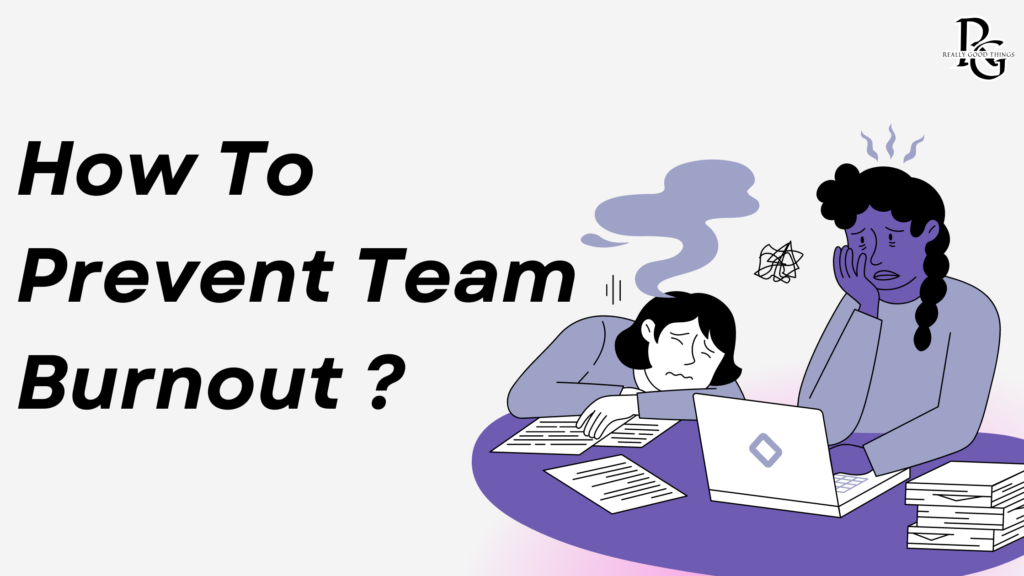Managing workloads across teams while preventing burnout is no easy feat in today’s fast-paced work environment. Whether you’re a startup founder or a seasoned manager, knowing how to distribute tasks efficiently and maintain your team’s well-being is critical for long-term success.
So, how can you strike that balance? How do you ensure your teams remain productive without pushing them to the brink of burnout? To shed light on this pressing issue, we asked six industry thought leaders to share their best advice.
As productivity expert David Allen once said, “You can do anything, but not everything.” With that in mind, here are key strategies from leaders who know how to make it work:
- Prioritize Communication and Planning
- Promote Autonomy and Open Communication
- Utilize Flexible Resource Allocation
- Develop a System for Workload Monitoring
- Use Tools to Track Tasks and Time
- Leverage AI to Automate Tasks
Each of these approaches can help you create a balanced, productive, and healthy team environment. Let’s dive deeper into how these leaders put these principles into practice.
6 Ways To Prevent Team Burnout
Prioritize Communication And Planning
In order to distribute tasks efficiently between different teams and avoid the risk of stress, I emphasize clear communication and advanced planning. For instance, one of our efficient approaches is to measure team effort as well as individual workload from time to time. With project-management technologies, we monitor the status and identify problems in advance. This means that we can shift tasks or extend time limits long before anyone is ready to panic.
I’ll sum it up by reiterating that phrasing has to be at least encouraging, common, and legitimate. Of course, let the culture where rest and absence are not perceived as a sin be supported. Perform job rotation occasionally or at least offer cross-training to make the work more interesting and less tedious. Implementing a healthy, balanced, and nurturing atmosphere reduces the risk of burnout while sustaining maximum productivity levels.

Khurram Mir, Founder and Chief Marketing Officer, Kualitatem Inc
Promote Autonomy And Open Communication
Managing workloads across different teams to avoid burnout requires a thoughtful balance of proactive planning, open communication, and flexible work structures. We emphasize autonomy and ownership from day one, encouraging team members to take responsibility for their workload while maintaining open lines of communication with leadership to signal when support is needed. This fosters a culture of trust and ensures individuals feel empowered to manage their responsibilities without feeling overwhelmed.
My best advice for others is to regularly assess team capacity and prioritize transparency about expectations. Implementing workload-management tools that provide visibility into who is working on what helps distribute tasks more evenly and prevents any one team or individual from becoming overloaded. Additionally, promoting a strong work-life balance by encouraging regular breaks, offering flexible hours, and fostering a supportive culture where people feel comfortable discussing mental health and burnout can make a significant difference. Finally, ensuring teams are continuously resourced and supported, particularly during peak periods, is crucial for maintaining long-term productivity and well-being.

Jamie Frew, CEO, Carepatron
Utilize Flexible Resource Allocation
As the founder of a legal-process outsourcing company, managing workloads across different teams is crucial to preventing burnout and maintaining high productivity. One effective strategy I’ve implemented is a flexible resource-allocation system that allows us to adjust team assignments based on current workloads and project demands.
For instance, when one team faced an unexpected surge in client requests, I reorganized our resources, temporarily shifting some members from a less-busy team to provide support.
This not only alleviated stress for the overloaded team but also kept our service quality high. Additionally, I encourage open communication about workload and stress levels during our weekly check-ins, creating a culture where team members feel comfortable voicing concerns.
My best advice for others is to foster an environment of flexibility and support—regularly assess your team’s workloads and be proactive in reallocating resources to ensure everyone remains engaged and balanced, which ultimately leads to better outcomes for both employees and clients.

Aseem Jha, Founder, Legal Consulting Pro
Develop A System For Workload Monitoring
Managing workloads across different teams to avoid burnout requires a balance of clear communication, resource management, and understanding the unique strengths of each team member. We’ve developed a system where we actively monitor workloads through project management tools, ensuring that tasks are distributed evenly and realistic deadlines are set.
Regular check-ins help us assess not only project progress but also the well-being of the team, allowing us to adjust timelines or reassign tasks before burnout becomes an issue. This proactive approach has been essential in fostering a healthy work environment where people feel supported rather than overwhelmed.
My best advice for others would be to create a culture that values both productivity and well-being. It’s important to give your team room to breathe—encourage breaks, promote time off, and lead by example by showing that rest is just as crucial to success as hard work.
Also, listen to your team. When people feel comfortable voicing concerns or suggesting adjustments, you can spot potential burnout early. In my experience, a sustainable workload is one that not only meets business goals but also nurtures the team’s creativity and energy for the long term.

Shehar Yar, CEO, Software House
Use Tools To Track Tasks And Time
To avoid burnout across teams, I focus on using the right tools to track tasks, time requirements, and collaboration. Tools like Jira help us see workloads clearly, making it easier to balance responsibilities and prevent anyone from being overwhelmed. My best advice: ensure transparency in task management, regularly review workloads, and use tools that allow you to plan ahead and adjust, as needed. This helps maintain a balanced load while keeping projects on track.

Sam Bahreini, Founder & CEO, Konstellate
Leverage AI To Automate Tasks
To manage workloads and prevent burnout, business leaders should prioritize clear communication, set realistic expectations, and leverage AI tools to automate repetitive tasks. Encouraging regular check-ins helps assess workload balance and provides necessary support.
In my company, we’ve trained our team to utilize AI tools like ChatGPT for content creation. I recall a particularly busy period when our team was overwhelmed. By integrating AI to automate routine tasks, we not only eased their burden but also allowed them to focus on more strategic work, which improved morale.
Our key strategy is empowering team members to use AI effectively. This not only reduces burnout but also enhances creativity and productivity. We maintain an open-door policy for employees to voice workload concerns, making it easier to adjust responsibilities as needed.
The results speak for themselves: since implementing AI tools, we’ve seen increased productivity and job satisfaction. Embracing technology isn’t just about efficiency; it’s about creating a supportive work environment that values employee well-being. Businesses that fail to adapt risk overloading their teams and falling behind.

Spencer Christian, Founder, Christian Companion App
In today’s competitive landscape, managing workloads effectively across teams is no longer just a matter of productivity—it’s about sustaining the well-being of your people. From fostering open communication to leveraging AI for automation, these strategies can help you not only meet your business goals but also create a work environment where burnout is less likely to occur.
As you implement these approaches, remember that prevention is better than recovery. Prioritizing your team’s mental health and work-life balance will ultimately lead to more creativity, stronger collaboration, and long-term success.
In the words of Sheryl Sandberg, “Motivation comes from working on things we care about. It also comes from working with people we care about.” Managing workloads wisely ensures your teams stay motivated, engaged, and ready to take on new challenges—without burning out.



